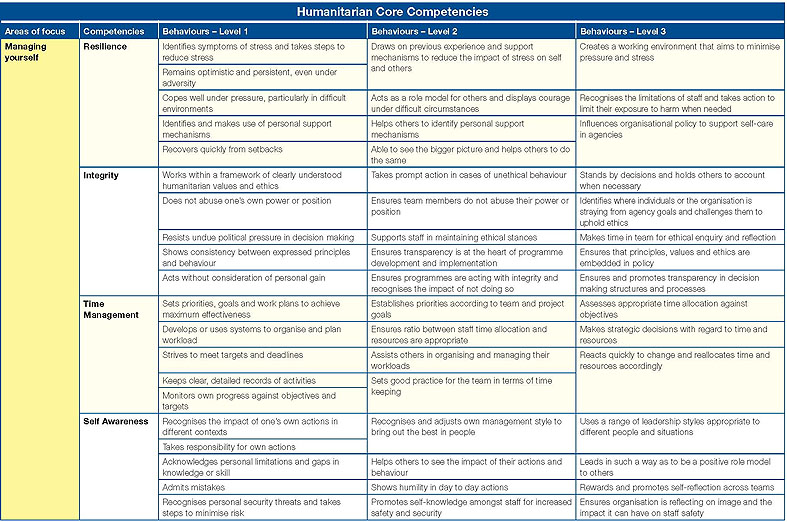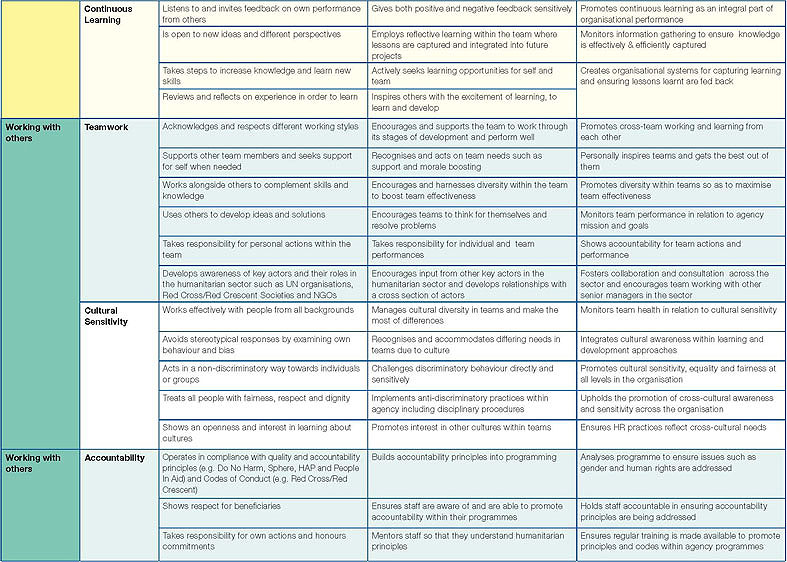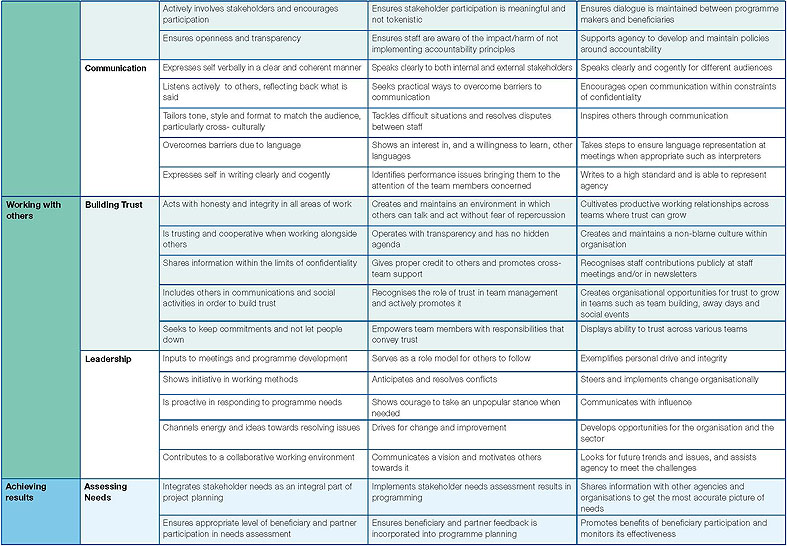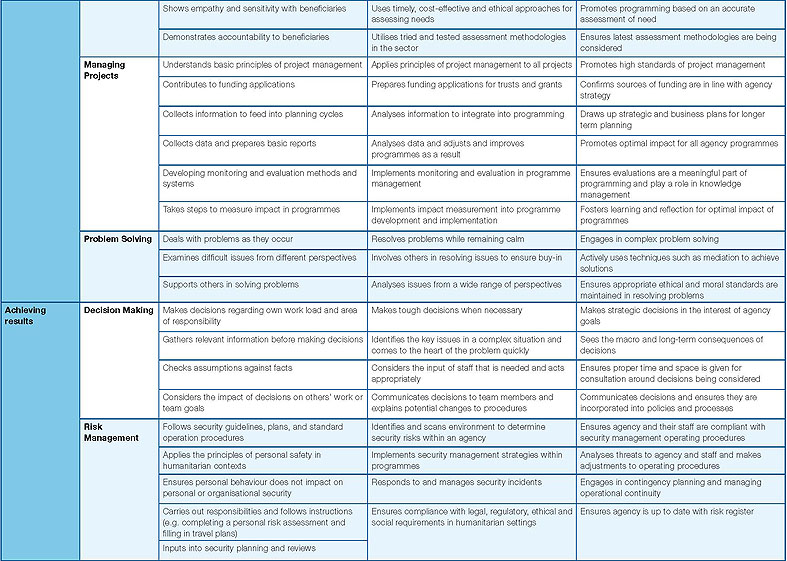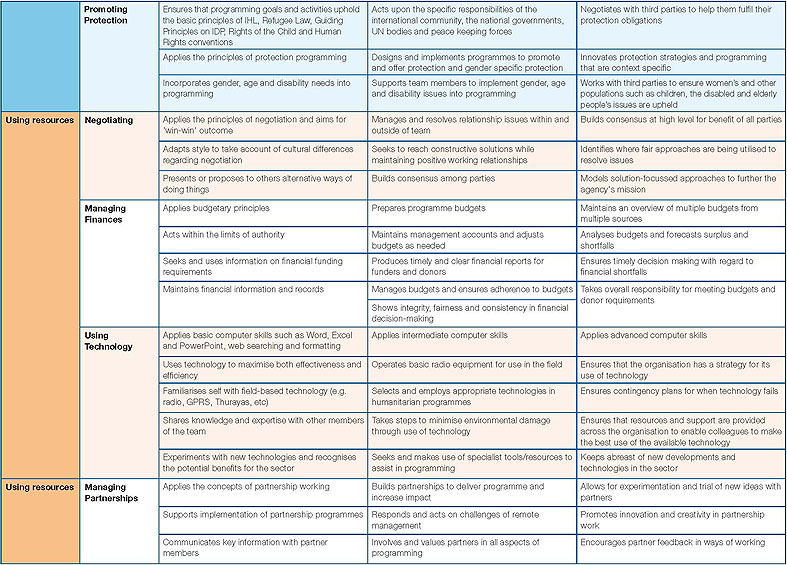Topic 8: Humanitarian competencies & profiles of relief workers
Background
In humanitarian situations, the key resources that agencies or organisations have are its staff, whether these be national or international. Indeed the success or otherwise of a program, will, to a large extent, depend upon the quantity and the calibre of its personnel. The main agency which focuses on this is People in Aid – http://www.peopleinaid.org and they are about “improving organisational effectiveness within the humanitarian and development sector worldwide, by advocating, supporting and recognising good practice in the management of people.”
Professionalising the Humanitarian Sector
Over the past 15 years there have been various initiatives carried out, particularly in Australia and Europe, to look more seriously at the whole area relating to the professionalisation of the humanitarian sector. In 2010 a Scoping Study was carried out by Enhanced Learning & Research for Humanitarian Assistance (ELRHA), see below:
ELRHA, 2010, Professionalising the Humanitarian Sector: A Scoping Study, http://www.elrha.org/professionalisation
As part of this study a total of 21 humanitarian competencies were identified, these being divided into four Areas of Focus. These Humanitarian Core Competencies are reproduced in this Topic and form the basis of an Activity. An important point to note is that for each Competency, there are three levels of behaviour, namely:
- Level 1: Up to 18 months experience
- Level 2: Between 18 months – 5 years experience
- Level 3: more than 5 years experience


